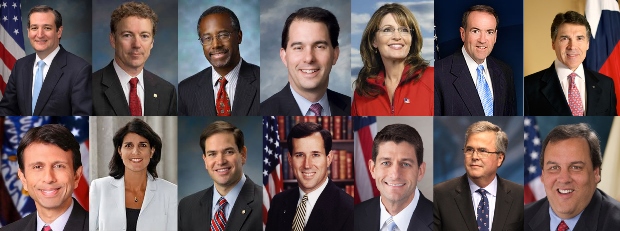Quinnipiac: Walker Leading in Iowa
Jeb drops to 5% in latest Iowa poll.
Written by Michael Warren
A new Quinnipiac poll of likely Iowa Republican presidential caucusgoers finds Wisconsin’s Scott Walker in front of the GOP pack with 21 percent support and a 9-point advantage over his closest primary opponents. That’s down from 25 percent and a 12-point lead in Quinnipiac’s February poll, but Walker remains ahead of his Republican rivals, with senators Rand Paul, Marco Rubio and Ted Cruz, and former Arkansas governor Mike Huckabee, all huddled together behind the Wisconsin governor. This jibes with the Real Clear Politics average of polls for the Iowa caucuses, which gives Walker a 5.5-point advantage.
Getting the biggest boost in Iowa since the February Quinnipiac poll are Rubio and Cruz, who have both declared their candidacies in the last month. Rubio was polling just 4 percent in Iowa in February to 13 percent support in May. Cruz has had a similar trajectory, from 5 percent in February to 12 percent support in May. Paul is tied with Rubio at 13 percent, but that’s the exact level of support the Kentucky senator had in February.
And Huckabee, who announced Tuesday he is running for president, maintains the 11 percent support he had back in February. Huckabee previosuly ran for president in 2008, surprising lots of political observers when he won the Iowa caucuses that year.
The rest of the large GOP field is polling in single digits in Iowa. Neurosurgeon Ben Carson, who officially entered the race on Monday, has just 7 percent support, down from 11 percent in February. That’s a bad sign for the political newcomer, who will need to rely on Iowa’s socially conservative Republicans to catapult him to the top tier. And former Florida governor Jeb Bush is faring worse, down to 5 percent in May when he was polling 10 percent in February.
The remaining candidates—Chris Christie, Carly Fiorina, Lindsey Graham, Bobby Jindal, John Kasich, Rick Perry, and Rick Santorum—are all polling at three percent or less.
This article was originally posted at the Weekly Standard blog.














